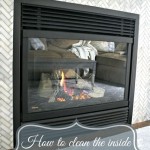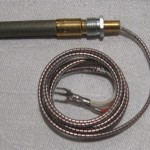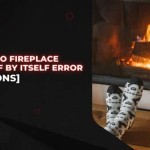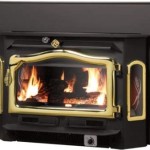Vermont Castings Gas Fireplace Remote: Operation, Troubleshooting, and Maintenance
Vermont Castings gas fireplaces offer a combination of aesthetics and convenience, providing warmth and ambiance with the simple push of a button. The remote control is a crucial component of this system, enabling users to manage the fireplace's functionality from a distance. Understanding the operation, troubleshooting common issues, and properly maintaining the remote are essential for ensuring consistent and reliable performance of the fireplace.
This article provides a comprehensive overview of Vermont Castings gas fireplace remotes, covering aspects such as basic operation, potential problems, and recommended maintenance procedures. This information aims to equip users with the knowledge necessary to optimize their fireplace experience and address common remote-related challenges.
Basic Operation of a Vermont Castings Gas Fireplace Remote
The specific features and functions of a Vermont Castings gas fireplace remote can vary depending on the model. However, some common functionalities are typically included. These may encompass basic on/off functions, flame height adjustment, thermostat control, timer settings, and child safety lock features.
On/Off Functionality: The primary function of the remote is usually to ignite and extinguish the fireplace. A dedicated on/off button allows for convenient control of the fire without needing to access the fireplace's manual controls.
Flame Height Adjustment: Many models offer the ability to adjust the flame height, allowing users to customize the ambiance and heat output. This feature typically involves pressing dedicated up and down buttons or using a slider on the remote to increase or decrease the flame intensity.
Thermostat Control: Some remotes incorporate a thermostat function, enabling the fireplace to maintain a set temperature in the room. The user can set the desired temperature, and the fireplace will automatically modulate its flame height or turn on and off to maintain that temperature. This feature contributes to energy efficiency and consistent comfort.
Timer Settings: Timer settings allow users to program the fireplace to turn on or off at specific times. This can be useful for pre-heating a room before arrival or ensuring the fireplace automatically shuts off after a certain period, enhancing safety and energy conservation.
Child Safety Lock: A child safety lock feature prevents accidental operation of the fireplace by children. Activating this lock typically disables the remote's buttons, preventing unauthorized use.
Prior to operating the remote, it is vital to review the user manual specific to the fireplace model. The manual provides detailed instructions on the functions of each button and setting, ensuring the remote is used correctly and safely. Additionally, familiarizing oneself with the manual enables users to take full advantage of the remote's capabilities.
Initial setup of the remote typically involves installing batteries and synchronizing the remote with the fireplace's receiver unit. The synchronization process often requires pressing a specific button on the receiver unit located within or near the fireplace and simultaneously pressing a button on the remote. This establishes a communication link between the two devices. The specific synchronization procedure can vary, so consulting the user manual is crucial.
Troubleshooting Common Remote Issues
Several issues can arise with a Vermont Castings gas fireplace remote, hindering its functionality. Addressing these issues promptly is essential to maintain the fireplace's usability. The following are some common problems and their potential solutions.
Remote Not Working: The most frequent problem is a remote that fails to operate the fireplace. This can be caused by several factors, including weak batteries, a loss of synchronization between the remote and the receiver, or a malfunctioning remote.
First, check the batteries and replace them with new ones. Ensure the batteries are installed correctly, paying attention to the polarity markings. If the remote still does not work after replacing the batteries, attempt to resynchronize the remote with the receiver unit. The synchronization process varies depending on the model; therefore, consult the user manual for specific instructions. If synchronization fails, the remote itself may be faulty and require replacement.
Intermittent Operation: Intermittent operation, where the remote works sporadically, can also be problematic. This can be caused by weak batteries, interference from other electronic devices, or a loose connection in the remote or receiver.
Begin by replacing the batteries. If the problem persists, reduce or eliminate any potential sources of interference, such as other remote controls, cordless phones, or wireless routers. Ensure the receiver unit is not obstructed and is within the specified range of the remote. Inspect the battery terminals in the remote and the wiring connections to the receiver for any signs of corrosion or looseness. Clean the terminals or tighten the connections as necessary.
Incorrect Temperature Readings: For remotes with thermostat functionality, inaccurate temperature readings can lead to discomfort and energy inefficiency. This can be caused by a faulty temperature sensor in the remote or the receiver unit.
Verify that the remote is placed in a location that is representative of the room's overall temperature and is not exposed to direct sunlight or drafts. If the temperature reading remains inaccurate, the temperature sensor likely requires replacement. This may necessitate contacting a qualified service technician.
Flame Height Issues: If the flame height adjustment is not working correctly, it could be due to a malfunctioning flame sensor, gas valve issues, or problems within the remote's communication with the fireplace control system.
Check the connection of the flame sensor on the burner assembly. A loose or dirty connection could affect the flame height adjustment. If the flame sensor appears normal, the gas valve may be malfunctioning and requiring professional attention. Confirm that the remote is properly communicating with the fireplace control system by resynchronizing the remote. If issues persist, a qualified technician should inspect the gas valve and control system.
If troubleshooting efforts are unsuccessful, consult a qualified gas fireplace technician. Attempting to repair complex issues without proper knowledge can be dangerous and potentially damage the fireplace.
Maintaining Your Vermont Castings Gas Fireplace Remote
Proper maintenance extends the lifespan of a Vermont Castings gas fireplace remote and ensures reliable performance. Regular maintenance procedures include battery replacement, cleaning, and proper storage.
Battery Replacement: Replace the batteries in the remote at least once a year, even if they are not completely depleted. This prevents corrosion and ensures the remote has sufficient power for optimal operation. Always use the recommended battery type specified in the user manual. Remove the batteries from the remote if the fireplace will not be used for an extended period, such as during the summer months. This prevents battery leakage, which can damage the remote's internal components.
Cleaning: Clean the remote regularly with a soft, dry cloth to remove dust and dirt. Avoid using harsh chemicals or abrasive cleaners, as these can damage the remote's surface and internal components. Pay particular attention to cleaning the battery compartment to remove any signs of corrosion. If necessary, use a cotton swab dipped in isopropyl alcohol to gently clean corroded terminals.
Storage: Store the remote in a safe and dry place when not in use. Avoid exposing the remote to extreme temperatures, humidity, or direct sunlight. Consider storing the remote in a drawer or cabinet to protect it from accidental damage. When storing the remote for an extended period, remove the batteries to prevent leakage.
Regularly inspect the remote for any signs of damage, such as cracks, broken buttons, or a damaged display screen. If any damage is detected, repair or replace the remote as needed. If the remote has a display screen, protect it from scratches by using a screen protector. This helps maintain the screen's visibility and prolongs the remote's lifespan.
By following these maintenance tips, users can ensure their Vermont Castings gas fireplace remote remains in good working condition for many years, providing convenient and reliable control of their fireplace system. Consistent maintenance reduces the likelihood of encountering operational issues and minimizes the need for costly repairs or replacements.
Understanding the operation, troubleshooting potential problems, and implementing proper maintenance procedures are vital for ensuring reliable performance and longevity of the Vermont Castings gas fireplace remote. This combined approach maximizes the user experience and ensures efficient and safe operation of the fireplace.
Need Honeywell Comfort Control Valve Remote Rt8220a For Vermont Castings Fireplace Hearth Com Forums Home
A Solution For Those Impossible To Get Vermont Castings Remote Controls Hearth Com Forums Home

Fireplace Remote Control On Off Timer Battery Receiver Majestic Monessen Vermont Castings Com

Honeywell Rt8220a Fireplace Transmitter Remote Control Black For

Honeywell Rt8220a Fireplace Transmitter Remote Control Black For

Vermont Castings Radiance Gas Stove Fireside Hearth Home

Vermont Casting Gas Fireplace Remote For Majestic Electronics By Owner Craigslist

Vermont Castings Intrepid Gas Stove Mountain Home Center

Vermont Castings Radiance Gas Freestanding Stove Fergus Fireplace

Vermont Castings Radiance Direct Vent Gas Stove Fireside Hearth And Leisure
Related Posts








